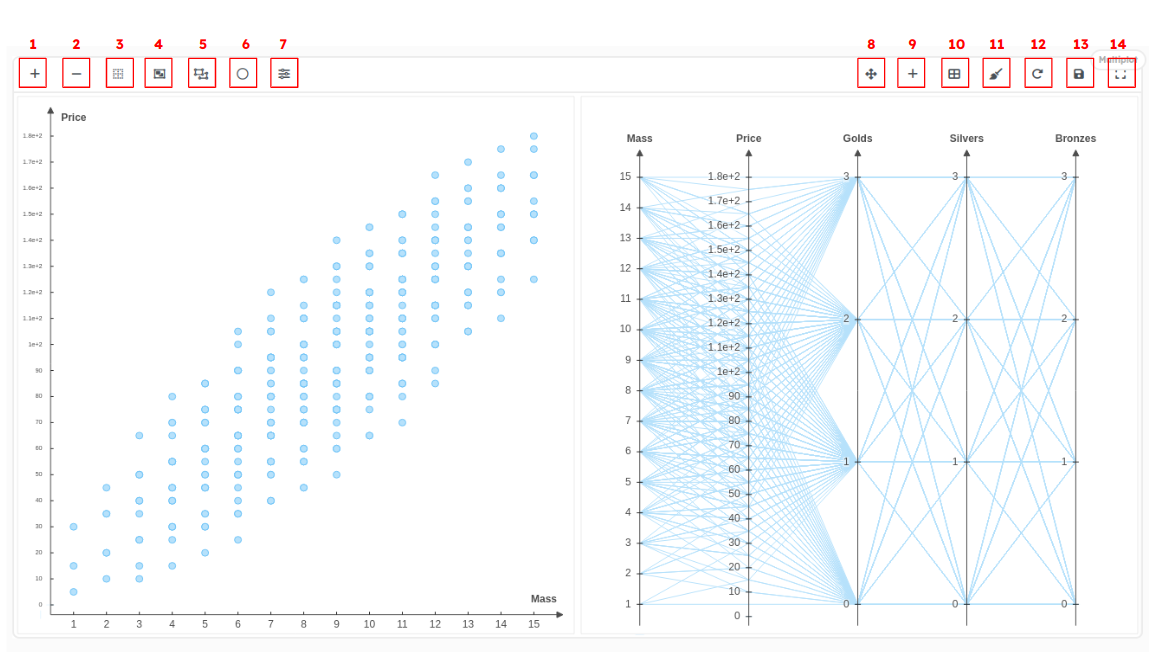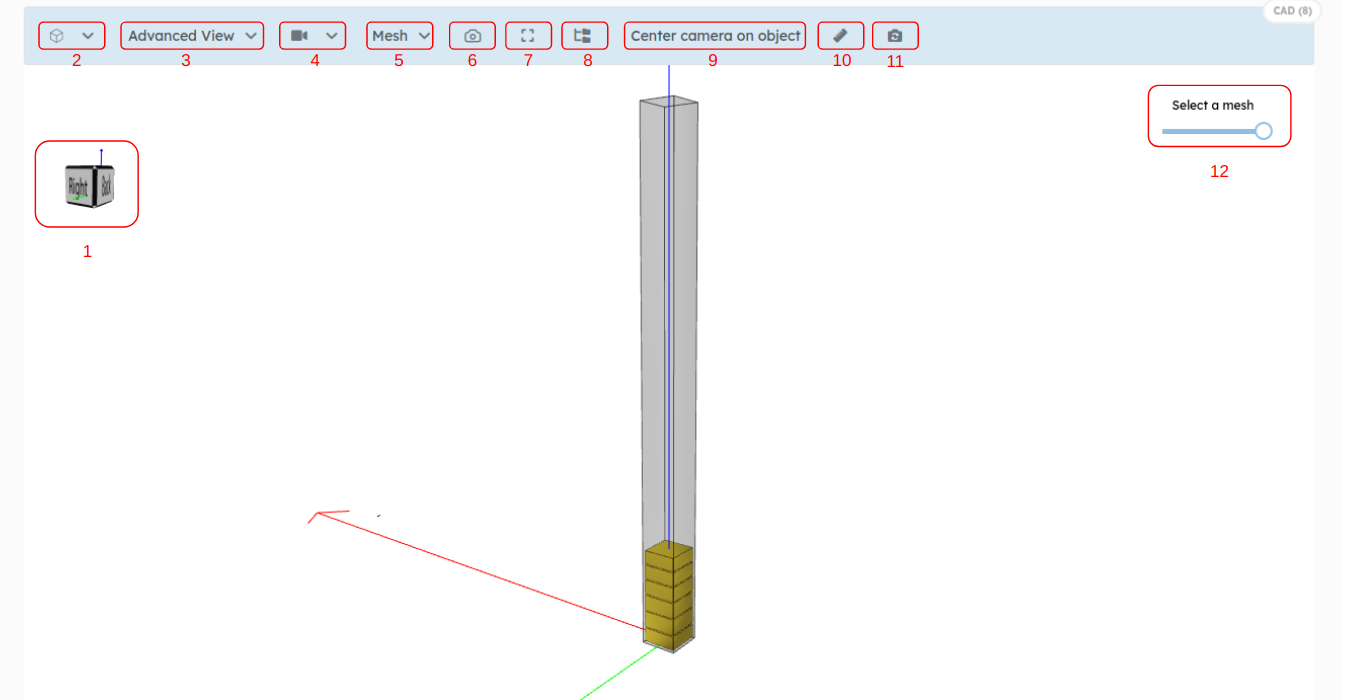Master 2D and 3D displays
This page explains what are the different buttons that can be found on the
plot_data display and 3d view (CAD view).
1. Plot Data (MultiPlot)

This allows the representation of an object in 2D view, and also can be used to represent the relationship between data on your object (MultiPlot: scatter and parallel plot).
In this part of the documentation, we will explain the second one, MultiPlot.
- Zoom in: Zoom in a particular part of your screen or canvas, making it larger and more detailed.
- Zoom out: Zoom out from a particular part of your screen or canvas, making it smaller and less detailed.
- Rubber-band Zoom: A zoom window, which can be moved around the screen to magnify specific areas.
- Enable selection: Select and highlight specific solutions on the graph (scatter or parallel plot), which can then be manipulated (open in another page, see the different associated parameters, etc.).
- Clear selection: Clear selection and return to the initial state (without selection).
- Enable merge point: Merge multiple data points or elements into a single point, which can help simplify and clarify your visualizations.
- Toggle filters: Activate or deactivate specific filters to control which data points or elements are displayed on the graph. This allows you to refine your view by focusing on particular subsets of the data.
- Enable manipulation mode: Handle and edit elements on the canvas (different plots mode), such as moving or resizing them.
- Add plot: Add a new plot or chart to your canvas.
- Order plots: Change the order in which plots or charts are displayed on the canvas.
- Clear all: Clear all elements from the canvas, making it blank and ready for new content.
- Reset view: Re-scale the canvas to its original state.
- Save canvas as image: Save the current state of the canvas as an image file, such as a PNG.
- Enter full screen mode: Full screen mode. It maximizes the canvas on your screen and hides any other distractions or interfaces.
2. CAD View

Allows the representation of an object in 3d format.
-
View
- View position: Change the viewpoint or angle of your display. There are 7 available views to choose from: isometric, front, top, left, back, bottom, and right.
- Advanced View: Provides access to more advanced and customizable view settings, such as Sectional and Exploded options.
-
Camera
- Mode: Switch between two camera modes:
- Perspective: Provides a realistic 3D view with depth perception.
- Orthographic: Offers a flat, undistorted view, ideal for technical or architectural visuals.
- Center camera on object: Quickly center the camera on a specific object or element within the scene.
- Launch cinematic animation: Enable cinematic effects and camera movements in 3D models
- Mode: Switch between two camera modes:
-
Mesh
Activating this option requires selecting one or more elements in the 3D display.
- Color: Change the color of the selected elements.
- Toggle visibility: Show or hide the selected elements in the 3D display.
-
Misc
- Screenshot: Take the current view as a screenshot.
- Full Screen: Enter full screen mode, which maximizes the display and hides any other distractions or interfaces.
- Toggle tree: Show or hide the hierarchical structure (tree) of elements in the 3D display.